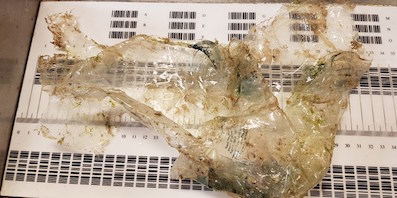 Cleanzine: your weekly cleaning and hygiene industry newsletter 3rd July 2025 Issue no. 1169
Cleanzine: your weekly cleaning and hygiene industry newsletter 3rd July 2025 Issue no. 1169
Your industry news - first
The original and best - for over 20 years!
We strongly recommend viewing Cleanzine full size in your web browser. Click our masthead above to visit our website version.
Changes to marine litter composition includes 'dramatic' reduction in plastic bags, finds research
 Some 25 years of research from the Centre for Environment, Fisheries & Aquaculture Science (Cefas) has revealed changes in the composition of marine plastic litter, finding a decrease in the number of plastic bags found on the UK's seabed and suggesting that efforts may be able to tackle the marine litter challenge.
Some 25 years of research from the Centre for Environment, Fisheries & Aquaculture Science (Cefas) has revealed changes in the composition of marine plastic litter, finding a decrease in the number of plastic bags found on the UK's seabed and suggesting that efforts may be able to tackle the marine litter challenge.
Despite the reduction in the number of plastic bags recorded in an analysis of scientific surveys, the overall amount of litter has been maintained by an increasing amount of other plastic items, including fishing debris.
Widespread distribution of litter items, especially plastics, were found on the seabed of the North Sea, English Channel, Celtic Sea and Irish Sea. High variation in the abundance of litter items, ranging from 0 to 1835 pieces.km?2 of seafloor, was observed.
Plastic items such as bags, bottles and fishing related debris were commonly observed across all areas. Over the entire 25-year period (1992-2017), 63% of the 2,461 trawls contained at least one plastic litter item.
"It is encouraging to see that efforts by all of society, whether the public, industry, NGOs or government to reduce plastic bags are having an effect," notes Thomas Maes, marine litter scientist at Cefas.
"We observed sharp declines in the percentage of plastic bags as captured by fishing nets trawling the seafloor around the UK compared to 2010 and this research suggests that by working together we can reduce, reuse and recycle to tackle the marine litter problem."
Marine litter is a global challenge, with increasing quantities documented in recent decades. The distribution and abundance of marine litter on the seafloor off the UK's coasts were quantified during 39 independent scientific surveys conducted between 1992 and 2017.
There was no significant temporal trend in the percentage of trawls containing any or total plastic litter items across the long-term datasets. Statistically significant trends were observed in specific plastic litter categories only. These trends were all positive except for a negative trend in plastic bags in the Greater North Sea - suggesting that behavioural and legislative changes could reduce the problem of marine litter within decades.
The paper: 'Below the surface: Twenty-five years of seafloor litter monitoring in coastal seas of North West Europe (1992-2017)' is available at:
5th April 2018







